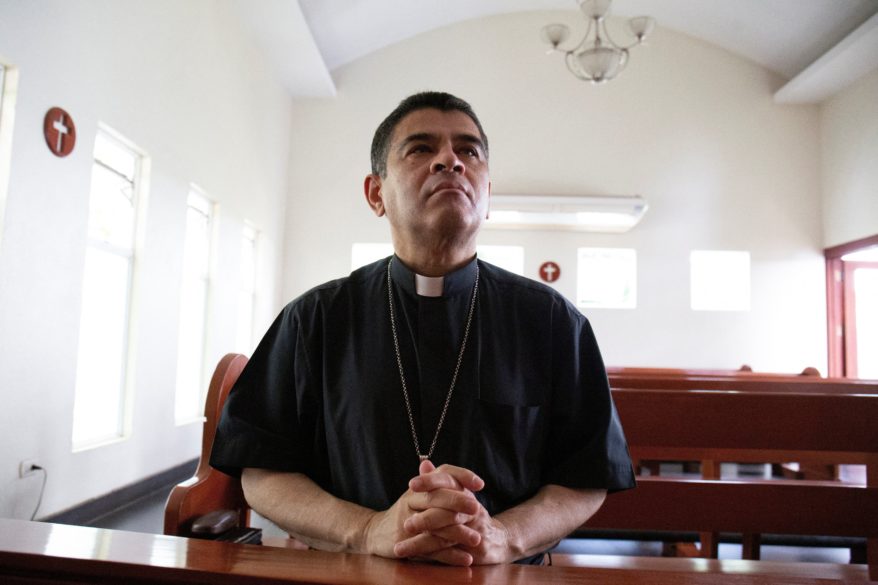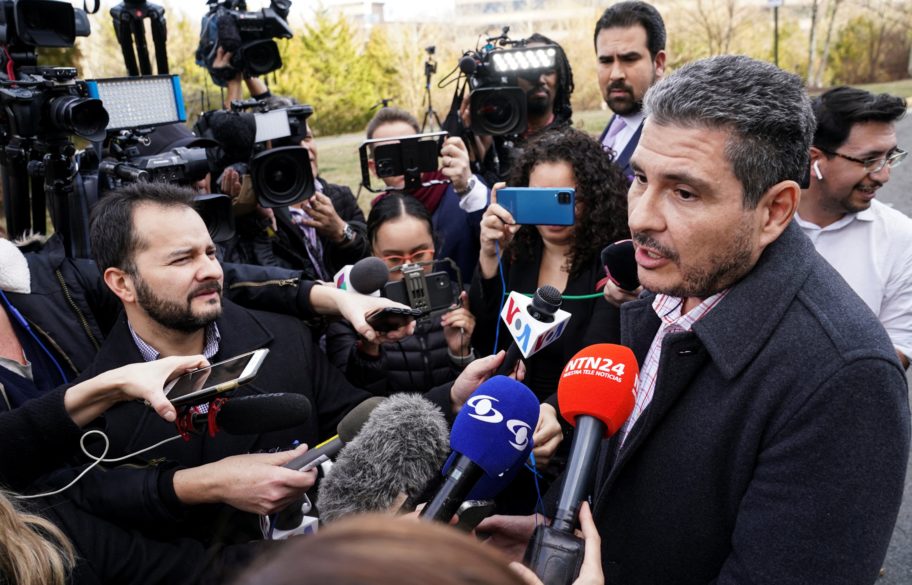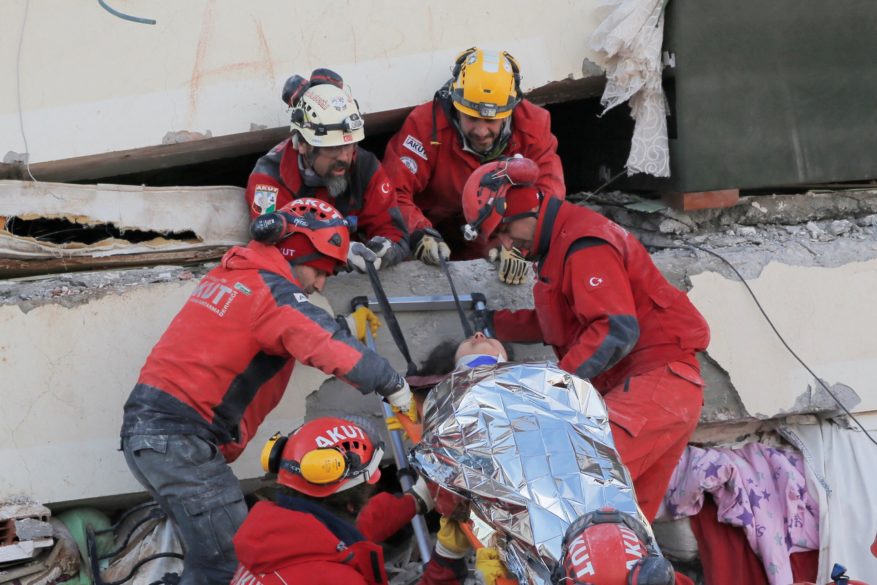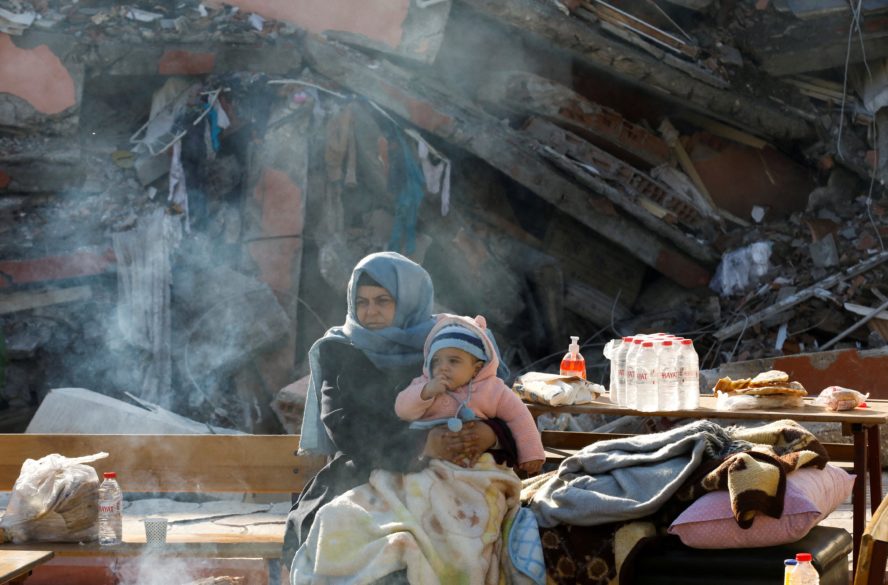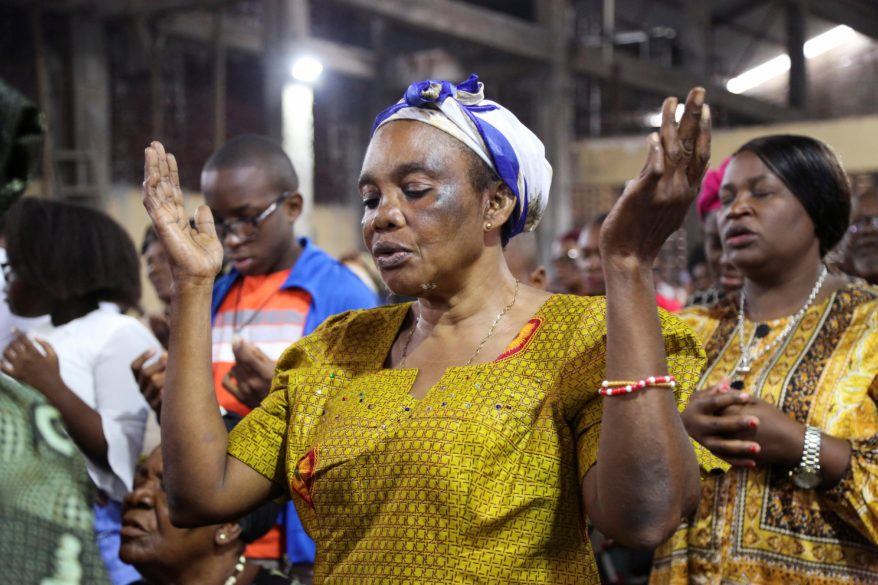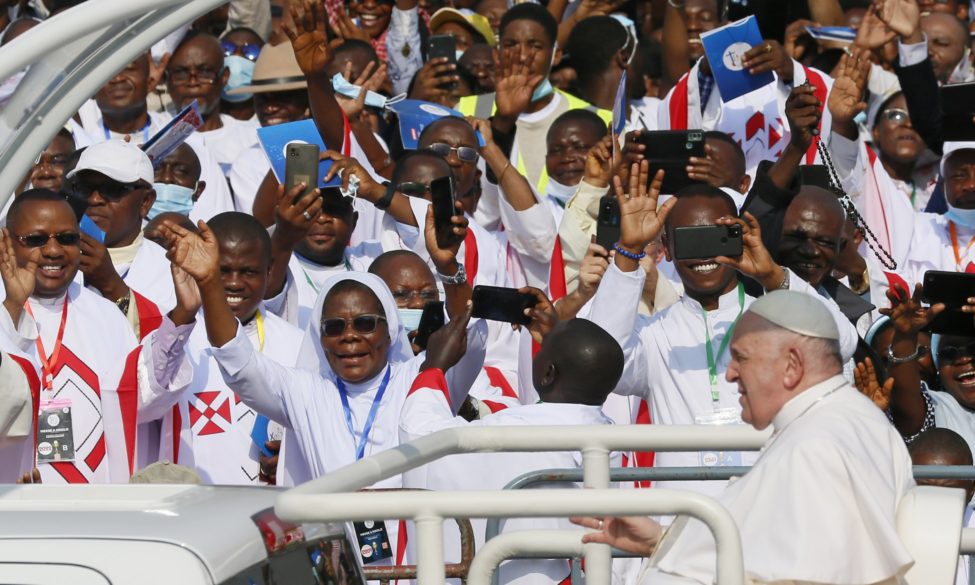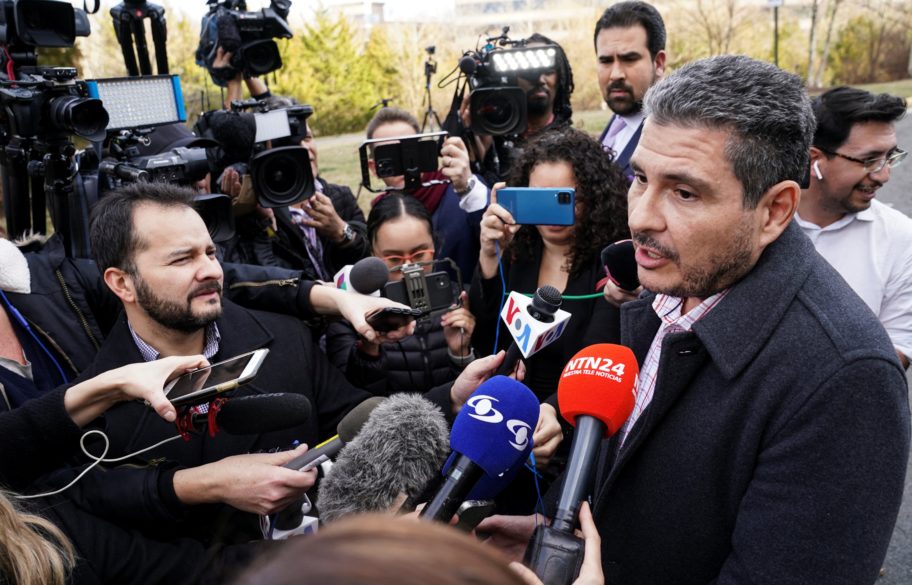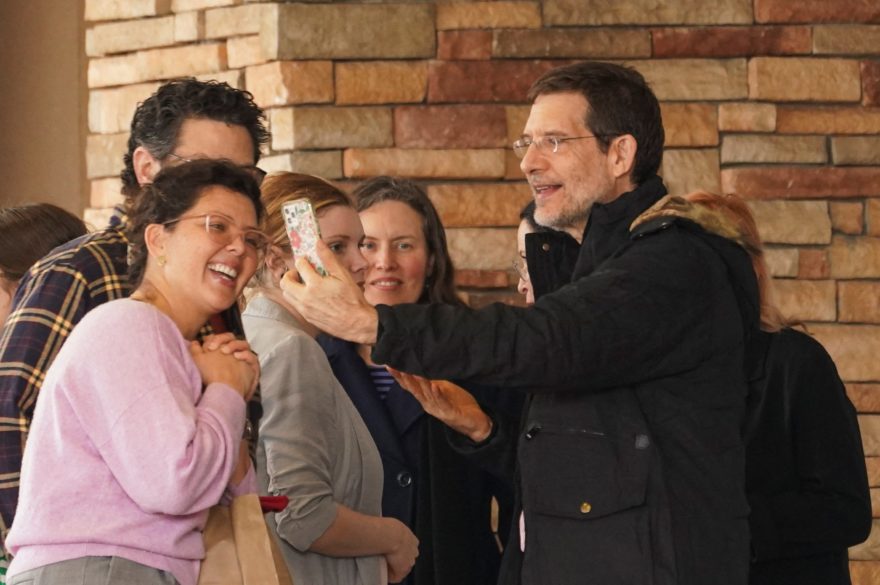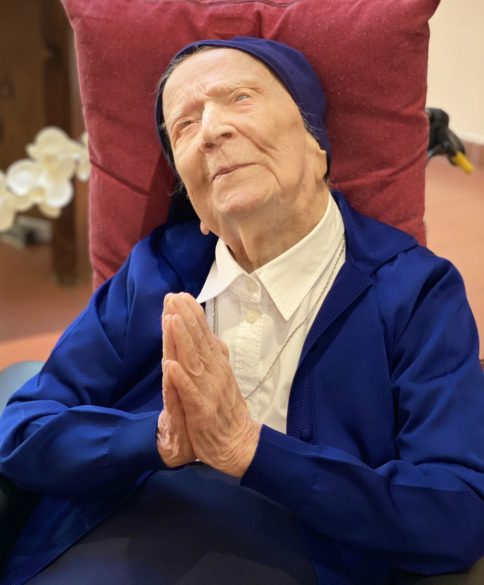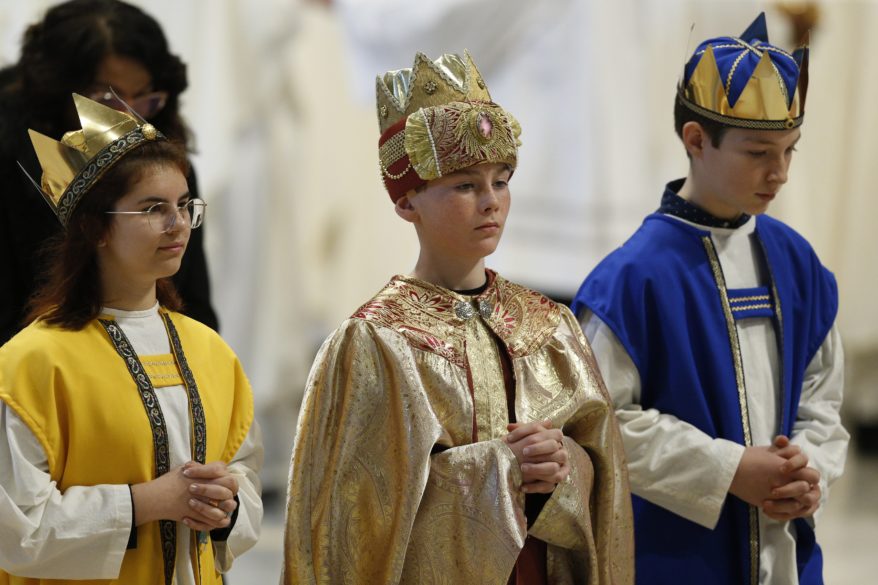NATION
FORT WORTH, Texas (OSV News) – Jonathan Roumie, who plays Jesus in the hit streaming series “The Chosen,” spoke to OSV News about his latest role in “Jesus Revolution,” why he plans to do some “heavy fasting” this Lent, and how he hopes to “bring people together under the banner of Christ.” Playing a charismatic but troubled evangelist in his new film marks a shift for Roumie, who admits some fans “may be a little thrown” by the contrast with his former role. Yet Roumie relies on his Catholic faith to guide him both on and off screen, and cites Mass, confession, adoration and the Liturgy of the Hours among his daily devotions. The actor said over the years he has also become more comfortable in speaking about his faith. “I had committed to surrendering to God,” said Roumie. “This is what I’m feeling called to do, and I’m going to do it. God will have my back.” Most of the episodes of “The Chosen,” an international hit series, have been filmed on a sound stage created for the show outside of Fort Worth.
NEW ORLEANS (OSV News) – During the New Orleans archdiocesan celebration of the World Day for Consecrated Life, Marianite Sister Suellen Tennyson, 84, made her first public comments Feb. 4 about her five months of captivity in Burkina Faso in West Africa last year. She was supervising her missionary congregation’s medical clinic in Yalgo, when she was taken in April 2022 by one band of kidnappers who later turned her over to a rival Muslim group. For some still unknown reason on Aug. 29, 2022, Sister Suellen’s captors handed her over to U.S. authorities. The first thing she wanted to know was if the wife of her great-nephew had had her baby. Her great-nephew had shared a sonogram of the unborn child with her before she was kidnapped. Iris Patricia Downing was born July 27 – nearly one month to the day before Sister Suellen’s release. The religious sister has since had several chances to hold the now-7-month-old girl in her arms. Sister Suellen is getting stronger, looking forward “to being just me again” and reveling in the blessedness of the normal.
BALTIMORE (OSV News) – Baltimore Circuit Court Judge Robert Taylor Jr. ruled Feb. 24 that a redacted version of the Maryland Attorney General Office’s report on child sexual abuse in the Archdiocese of Baltimore must be released publicly. The judge ordered the attorney general’s office to redact more than 200 names from the report and submit it to the court by mid-March. Christian Kendzierski, archdiocesan spokesman, said in a written statement issued in response to Taylor’s ruling, “As we said publicly last year, we respect the court’s decisions in this matter and will continue to cooperate with the court and the Maryland attorney general’s office. The archdiocese continues to pray this report brings some measure of healing of the deep wounds caused by the scourge of child sexual abuse in the life of the church.” In a letter sent to Catholics in the archdiocese Nov. 17, Baltimore Archbishop William E. Lori acknowledged information in the report would be a source of renewed pain for many, “most especially those harmed by representatives of the church.” The report investigates 80 years of allegations of sexual abuse and the response by the archdiocese to those allegations.
VATICAN
VATICAN CITY (CNS) – It is not enough to ask people who have suffered abuse for their forgiveness, Pope Francis said. They also must be offered “concrete actions to repair the horrors they have suffered and to prevent them from happening again” as well as the truth, transparency, safe spaces, psychological support and protection, the pope said in a video message released by the Pope’s Worldwide Prayer Network March 2. In his video message, the pope said, “In response to cases of abuse, especially to those committed by members of the church, it’s not enough to ask for forgiveness.” “Their pain and their psychological wounds can begin to heal if they find answers – if there are concrete actions to repair the horrors they have suffered and to prevent them from happening again,” Pope Francis said. “The church cannot try to hide the tragedy of abuse of any kind. Nor when the abuse takes place in families, in clubs, or in other types of institutions,” he said. In fact, the church must be a model to help shine light on and remedy the problem.
VATICAN CITY (CNS) – Pope Francis will travel to Hungary April 28-30 where he will meet with government officials, refugees, academic scholars and young people in Budapest, the Vatican announced Feb. 27. The pope will arrive in Budapest April 28 and will meet with Katalin Novák, president of Hungary, and the country’s prime minister, Viktor Orbán, as well as local bishops, priests and other members of Hungary’s Catholic community. Novák, who is Hungary’s first female head of state, invited Pope Francis to visit Hungary during her visit to the Vatican Aug. 26, 2022. The pope will only spend one full day in the country April 29, during which he will meet privately with children from a local school, speak with refugees and people in need, address young people in Hungary and meet with the local Jesuit community. Before returning to Rome late afternoon April 30, he will celebrate Mass before the Hungarian Parliament building and meet with scholars from Budapest’s Pázmány Péter Catholic University.
WORLD
SAULT SAINTE MARIE, Ontario (OSV News) – As he marks the tenth year of his papacy, Pope Francis has made progress in healing long-damaged relations between the Catholic Church and Indigenous peoples, sources told OSV News. Highlights of his outreach have included pastoral visits such as his 2022 journey to Canada, during which he apologized to Indigenous nations on their land for the church’s role in the government’s residential schools and the horrifying abuses committed; the Amazon Synod; and his writings on the deep relationship between care of creation and the Indigenous peoples. “When Pope Francis visited Puerto Maldonado in Peru (in 2018), he came not to give a talk, he came to listen,” said Peru-based Maryknoll Sister Patricia Ryan, a longtime advocate for Indigenous rights. “And listen he did, to testimonies given by two spokespersons – a woman and a man – of the Indigenous Amazonian population of Peru, who gave witness to the sufferings and indignities, wisdom, commitment and just demands of their peoples and of Mother Earth,” said Sister Ryan. “Pope Francis knows the importance of listening.”
IRPIN, Ukraine (OSV News) – “We lost everything”: It’s a sentiment shared by millions of Ukrainians uprooted and displaced during a year of a war condemned by much of the world that has transformed the face of Europe, increased international tensions and caused ripples in the global economy. “We’re living a new life now. It can’t be the same as it was before the war. Life will never be the same again,” said Sister Yanuariya Isyk, a member of the Sisters of the Order of St. Basil the Great whose ministry is based in Kyiv. The new reality is one of displacement and confusion, loss and death. Hospitals, schools and neighborhoods have been targeted in brutal acts that have outraged the world. The United Nations says more than 7,000 civilians, including more than 400 children, have died because of the war, and more than 11,700 have been injured. “It will take many years to rebuild and heal this society,” Sister Isyk said. Yet Ukrainians also speak of renewed unity, solidarity and hope. In a country that has become one big conflict zone, the war has galvanized religious communities to open their doors to those who have been displaced and to lead various humanitarian missions that include providing assistance to mothers and children with various needs. “They are providing so much help,” said Habovska who, along with her infant son, fled the then-occupied city of Kherson.
MOSUL, Iraq (OSV News) – From the devastating war in 2003 to the three-year occupation of Mosul by Islamic State militants, Iraq is often portrayed as a land caught in a spiral of violence and perennially doomed to remain in a state of instability. However, for Dominican Father Olivier Poquillon, Iraq is steadily rising from the ashes of war and taking its rightful place among the community of nations. While Iraq also has faced the global challenges of the COVID-19 pandemic and the impact of economic inflation, the Dominican priest said the country is on the path toward rebuilding a lasting foundation for the new generation. Father Poquillon is representing the Dominicans to UNESCO’s flagship program “Revive the Spirit of Mosul,” an initiative that intends to rebuild the ancient city and its historical and religious landmarks that were destroyed or heavily damaged during the devastating occupation of the Islamic State of Iraq and the Levant, commonly known as ISIL. Among the sites being rebuilt, the UNESCO program is also working toward rebuilding the Al-Tahera Syriac Catholic Church, which Pope Francis visited during his historic pilgrimage to Iraq in March 2021.

